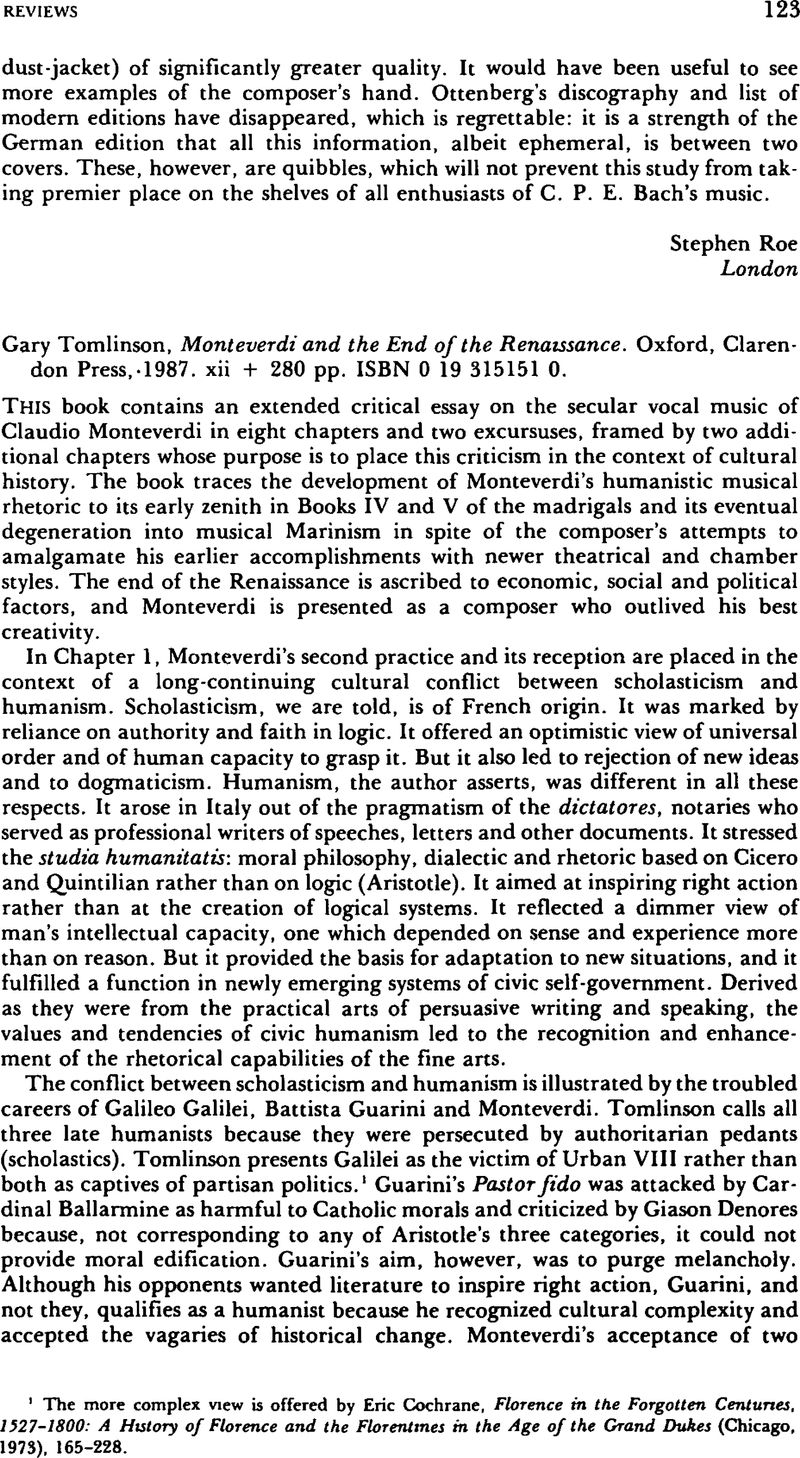No CrossRef data available.
Article contents
Gary Tomlinson, Monteverdi and the End of the Renaissance. Oxford, Clarendon Press, 1987. xii + 280 pp. ISBN 0 19 315151 0.
Review products
Published online by Cambridge University Press: 01 January 2020
Abstract

- Type
- Reviews
- Information
- Copyright
- Copyright © 1989 Royal Musical Association
References
1 The more complex view is offered by Eric Cochrane, Florence in the Forgotten Centuries, 1527–1800: A History of Florence and the Florentines in the Age of the Grand Dukes (Chicago, 1973), 165–228.Google Scholar
2 Trinkaus, Charles, “The Religious Thought of the Italian Humanists, and the Reformers. Anticipation or Autonomy?' and Paul Oskar Kristeller, ”The Röle of Religion in RenaissanceGoogle Scholar
3 Tomlinson, Gary, ‘Madrigal, Monody, and Monteverdi's “Via naturale alia immitatione”’, Journal of the American Musicological Society, 34 (1981), 104–8.Google Scholar
4 Documented by Susan Parisi, ‘The Virtuosi at the Court of Mantua, 1600–1625’, paper presented at the meeting of the American Musicological Society, New York, 1979; and in her dissertation, soon to be completed at the University of Illinois.Google Scholar
5 Se per havervi oimè, bars 7, 11 and 19.Google Scholar
6 Just to begin sampling Book IV, see in Cor mio mentre vi miro the word ‘sospir’; in A un giro sol de' dell'occhi the words ‘giro’, ‘ride’, ‘mar’ and ‘venti’; in Io mi son gtovinetta the words ‘rido’, ‘canto’, ‘cantava’, ‘fiorisce’ and ‘fuggi’; in Quel augellin che canta the words ‘canta’, ‘vola’ and ‘risponda’; in Non piú guerra pietate the words ‘guerra’ and ‘mora’; in Si ch'io vorrei morire the words ‘morire’, ‘estingua’ and ‘stringete’; and so on.Google Scholar
7 A convenient overview of this scholarship can be found in the entry ‘Figuren, musikalischrhetorische’ by Arnold Schmitz in Die Musik in Geschichte und Gegenwart; in the entry ‘Rhetoric and Music’ by George J. Buelow in The New Grove Dictionary, and generally in much of the literature on the works of Schütz and Bach.Google Scholar
8 Rosand, Ellen, ‘Seneca and the Interpretation of L'incoronazione di Poppea’, L'incoronazione di Poppea 38 (1985), 34–71, presented at a meeting of the American Musicological Society as early as 1982.Google Scholar


